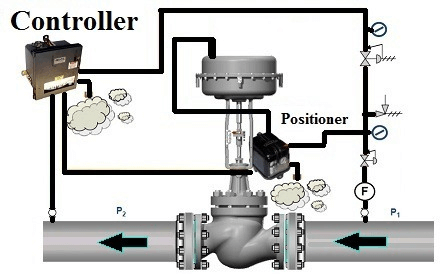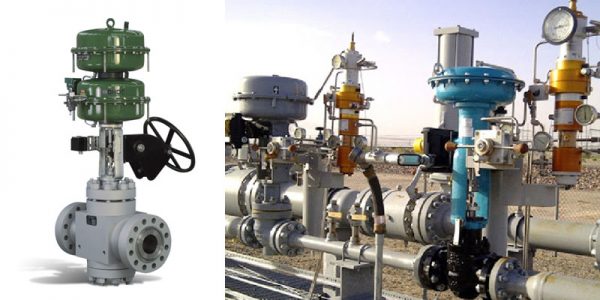Optimizing System Control with High-Performance Control Valves
Wiki Article
Achieve Seamless Combination and Control With Quality Building Automation Controls
In the realm of modern-day building management, the value of top quality structure automation controls can not be overemphasized. Welcoming high quality structure automation controls is not merely an issue of comfort yet a tactical crucial for organizations aiming to optimize their centers' efficiency and sustainability.
Advancement of Structure Automation Controls
Throughout the previous couple of years, the development of developing automation controls has dramatically transformed the way buildings are taken care of and operated. Originally, constructing automation systems largely concentrated on fundamental functions such as regulating air, air flow, and home heating conditioning (A/C) systems. As technology progressed, these controls have come to be a lot more advanced, allowing for a larger range of building systems to be integrated and handled centrally.The evolution of developing automation controls has seen a change in the direction of even more intelligent systems that can adapt to changing conditions in real-time. This adaptability is important for enhancing power efficiency and making certain resident convenience. Furthermore, contemporary building automation controls now supply attributes such as predictive maintenance, remote tracking, and information analytics, making it possible for facility managers to make data-driven choices to boost structure performance.

Benefits of Quality Integration
The innovation in building automation controls towards more smart systems has actually highlighted the substantial advantages of top quality assimilation in enhancing building procedures and improving overall efficiency. This centralized control likewise gives far better exposure and understandings into building performance, making it possible for aggressive upkeep and optimization techniques. On the whole, the benefits of quality assimilation in building automation controls are undeniable, using increased performance, convenience, and operational effectiveness.Improved Individual Experience and Availability
Enhancing user interaction with building automation manages with instinctive layout and enhanced availability boosts the total experience for passengers and center managers alike. By focusing on user experience, building automation systems can end up being more reliable and user-friendly. User-friendly user interfaces, clear navigation, and adjustable setups equip users to connect with the controls quickly and properly.Ease of access features play a critical duty in making sure that all individuals, consisting of those with impairments, can make use of the structure automation controls easily. Integrating functions such as voice commands, responsive buttons, and color-contrasted displays can enhance access and make the controls a lot more comprehensive.
In addition, improved user experience results in greater user satisfaction, raised performance, and better decision-making. Passengers can adjust environmental setups according to their choices, while facility managers can effectively check and manage building systems - control valves. Overall, focusing on user experience and access in structure automation manages contributes to a much more effective and smooth building atmosphere for all stakeholders involved
pop over to this web-site
Sustainable Practices Via Automation

Additionally, automation can facilitate the integration of renewable resource sources such as solar panels or wind generators into building operations. By immediately adjusting power usage based upon the accessibility of renewable resource, buildings can even more lower their reliance on non-renewable sources. This seamless assimilation of sustainable practices not only benefits the atmosphere but also enhances the general operational performance and cost-effectiveness of the building. Through automation, structures can line up with contemporary sustainability objectives and add to a greener future.
Future Trends in Structure Control Systems
One famous trend forming the future of building control systems is the increased combination of Artificial Knowledge (AI) and device discovering. Additionally, the Net of Points (IoT) is revolutionizing structure control systems by linking sensors and tools to boost and streamline procedures performance.
An additional key pattern is the focus on cybersecurity procedures to safeguard versus possible threats to constructing automation systems. As structures come to be extra interconnected, making sure robust cybersecurity procedures will be essential to protect delicate information and protect against unapproved gain access to.
In addition, the change towards cloud-based platforms is getting energy, permitting systematized control and remote access to building systems. This assists in much easier tracking, upkeep, and updates, improving the general efficiency and flexibility of structure control systems. As innovation proceeds to advance, these trends are anticipated to shape the future landscape of building automation controls, driving advancement and sustainability in the constructed setting.
Conclusion
Finally, building automation controls have developed considerably, supplying numerous advantages such as boosted individual experience, ease of access, and sustainable methods. Quality combination plays a key his response role in achieving smooth control and effective procedure of building systems. Future trends in building control systems are most likely to concentrate on further boosting automation abilities for enhanced power effectiveness and general performance. It is crucial for structure owners and drivers to prioritize the adoption of quality building automation controls to maximize building procedures and attain long-lasting sustainability goals.In the realm of modern structure management, the importance of high quality building automation controls can not be overstated. On the whole, the evolution of structure automation controls continues to drive innovation in the structure management industry, providing brand-new possibilities for developing smarter and more sustainable structures.
The advancement in building automation regulates towards even more smart systems has actually emphasized the substantial advantages of top quality combination in enhancing structure procedures and boosting total effectiveness. Overall, focusing on individual experience and access in building automation manages contributes to a much more smooth and efficient structure environment for all stakeholders included.
It is necessary for structure proprietors and operators to focus on the fostering of high quality building automation regulates to maximize building procedures and achieve lasting sustainability goals. - control valves
Report this wiki page